How to Paint Pocket Doors
If you’re wondering how to paint pocket doors these easy tips will put your mind at ease. Painting pocket doors is as easy as painting interior doors. Paint is such an easy way to update your interior doors.
This post contains affiliate links. By purchasing an item through an affiliate link, I earn a small commission at no extra cost to you. As an Amazon Associate I earn from qualifying purchases.
I have 3 sets of pocket doors in my home and like all of the other doors, they need to be painted.
I’ve painted a ton of doors in my homes before, but I was really worried about how to paint pocket doors.
Pocket doors are doors that slide into a pocket in the wall, rather than open up the traditional way. They’re typically in older homes, but for some reason my house has them.
They’re often used in places where doors opening would be in the way (usually of other doors.)
Because they slide into the wall, I was worried about a few things.
Would they get scratched up when they were open and shut? Would I be able to paint the entire edge? Does the door need to be removed to be painted?
And most importantly, would they look good?
This pocket door is in my office, which I painted a deep green color. Keeping the door white would draw too much attention to it, so I decided to paint the doors and the trim green as well.
So to answer the questions above: they do not get scratched up when opening or closing because nothing touches the sides of the door. All of the hardware is at the top.
I was able to paint the entire door because my door opens enough. And no, it wasn’t necessary to remove the door for painting.
And yes, it looks amazing.
How to Paint Pocket Doors
Supplies Needed:
- Paint in Satin or Semigloss
- Paintbrush
- Painter’s tape
- Utility knife (for tape)
- Foam roller (if desired)
Prep Work
- Close the door as much as you can.
- Clean the door thoroughly. You would be surprised how dirty doors get. Pay special attention to the panels and the area near the door hardware.
- Tape off the hardware. Use a utility knife to get straight lines where needed.
Painting Pocket Doors
You can use a foam roller if you want. If I’m only painting one door, I typically just use a paintbrush.
Remember to keep a wet edge. What I mean is don’t paint an area, let it partially dry, and go back to it while it’s still kind of wet.
Instead, let it dry completely and go back to it. This will help you avoid visible brushstrokes.
The door needs to be completely shut while painting. This will allow you to get the edge that goes into the wall.

If your door doesn’t open all the way, paint what you can and use a small craft paintbrush to get the rest of it.
- Using a brush, paint all of the inset panels first.
- Next, paint the raised panels.
- Then paint the center vertical portions of the door.
- Next paint the outer vertical portions of the door. Use the tip of the brush to get a sharp edge (or you can tape it off if needed.)
- Last, paint the horizontal portions of the door.
- Let the paint dry and apply another coat. The first coat usually looks pretty bad.
- You might need a third coat or you might be able to get away with touch-up paint.
- Remove the painter’s tape while the paint is still wet.
If you want, you can paint both sides of the door at once.
Let the paint dry before opening the door to go through it to start the other side. (I only painted one side for now since I painted it green to match my office.)
Want to see more of this room? Check out my boho office reveal here.
You might also like:
Pin for Later!

Emy is a vintage obsessed mama of 2 DIYer who loves sharing affordable solutions for common home problems. You don’t need a giant budget to create a lovely home. Read more…



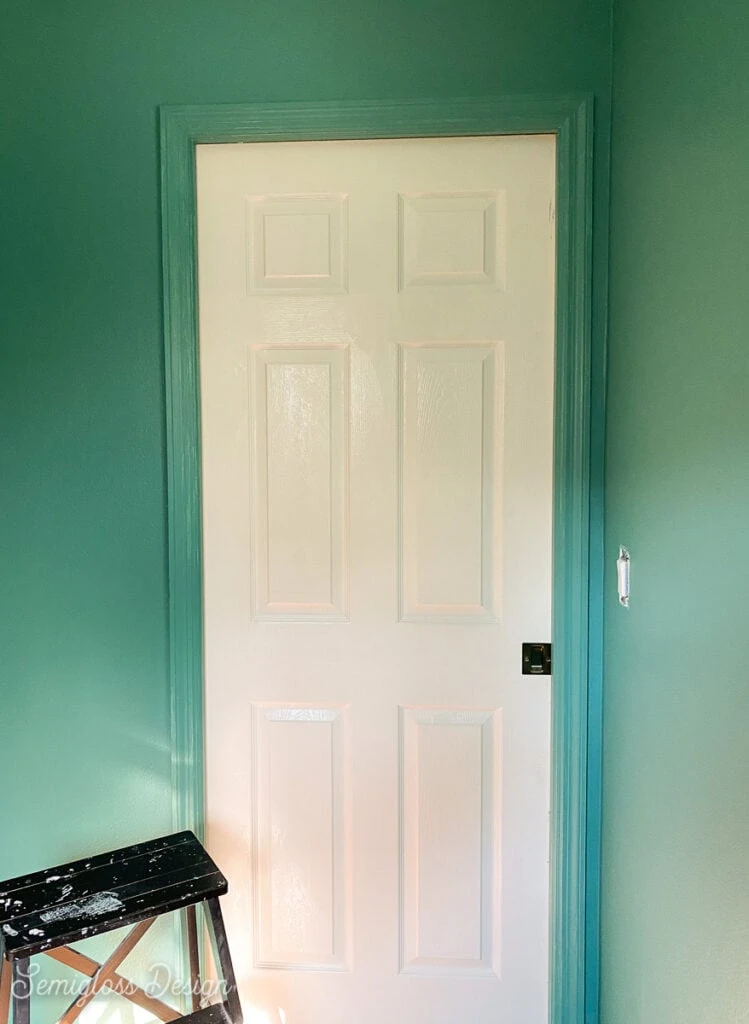
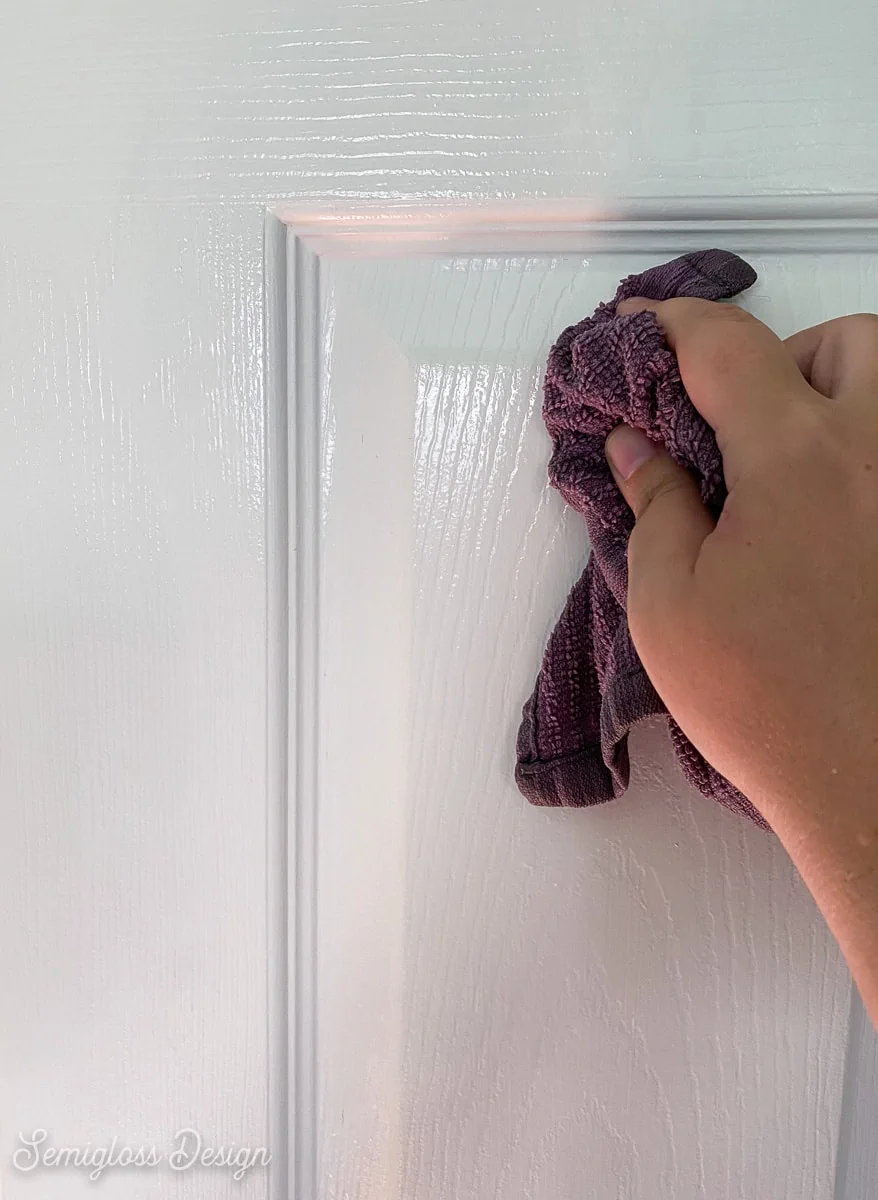




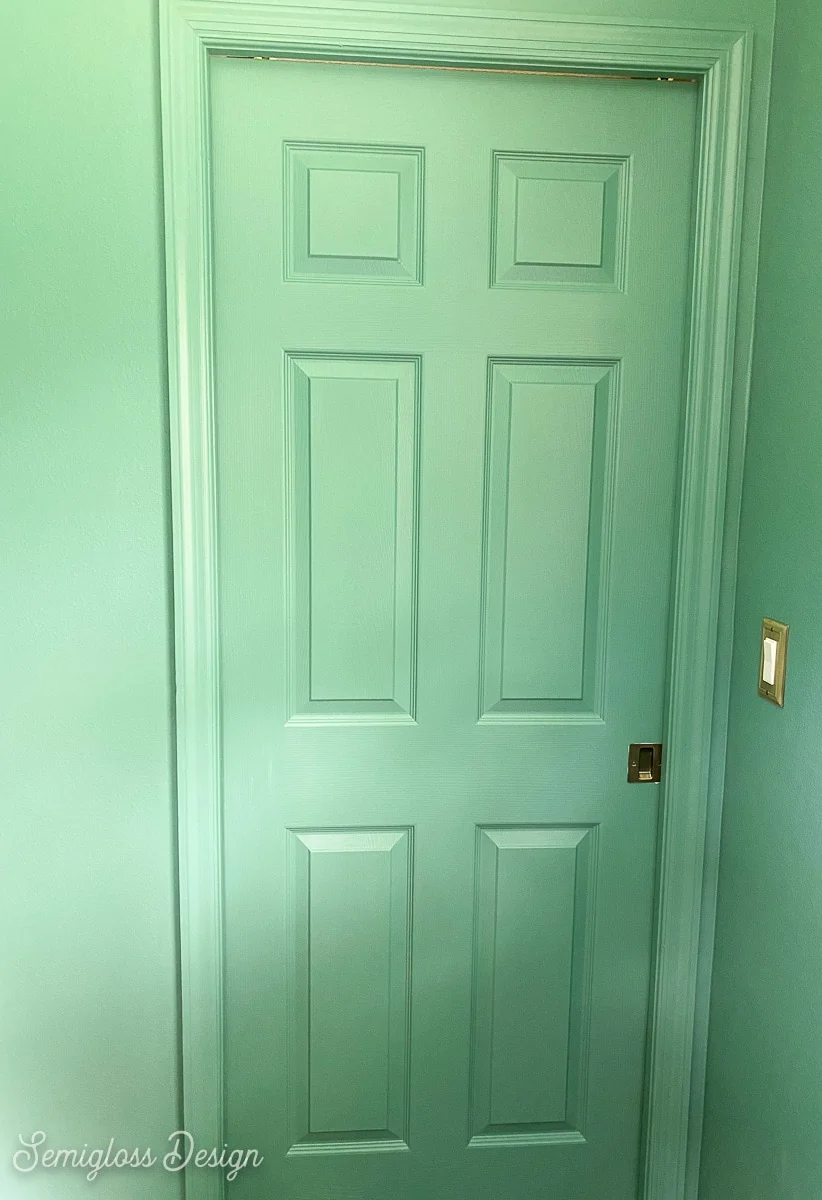
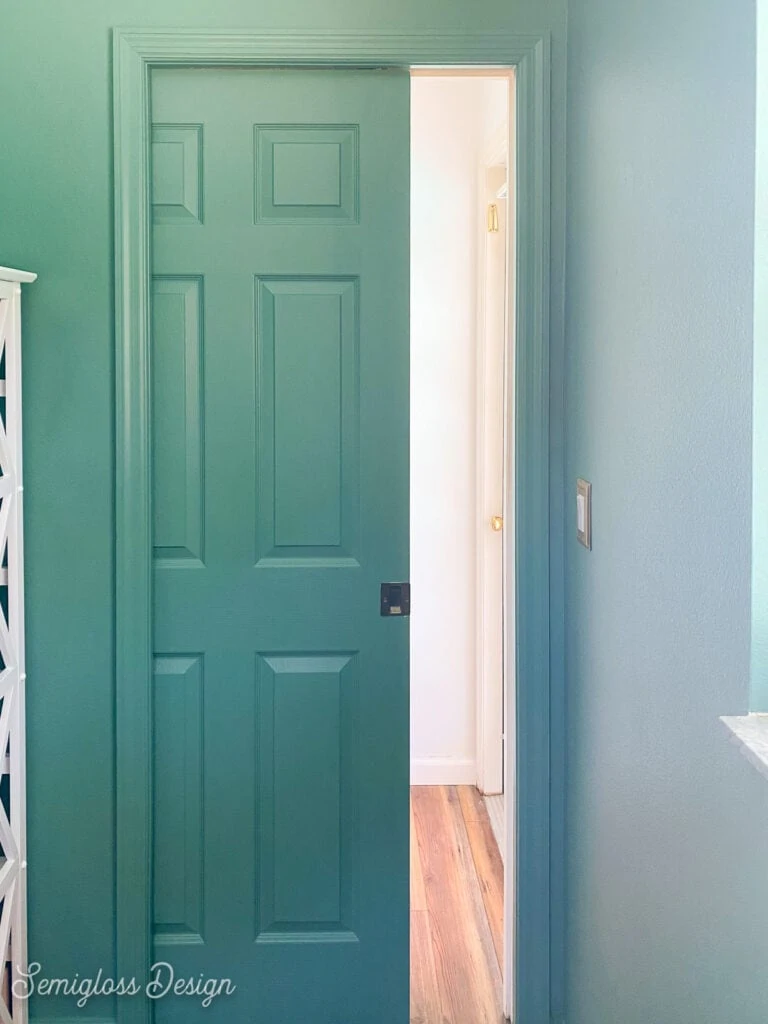
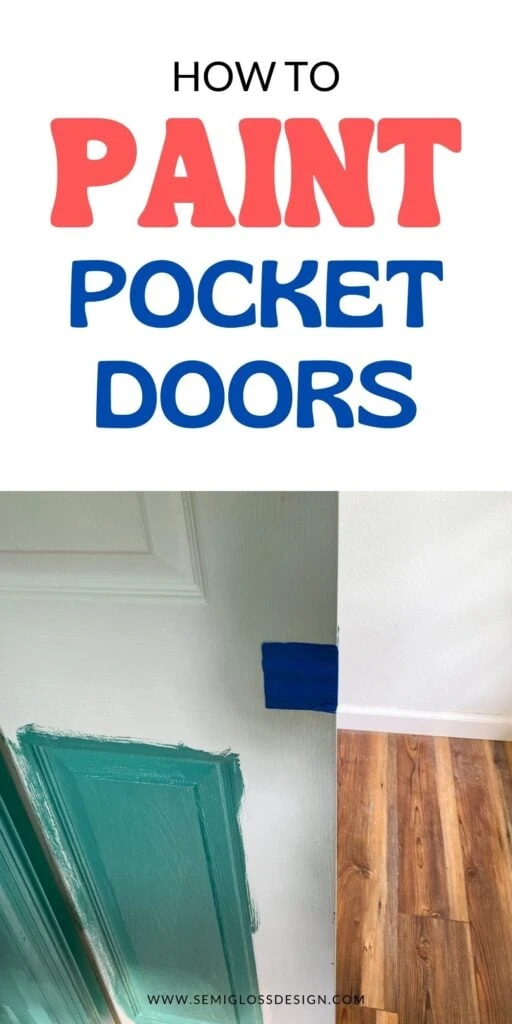


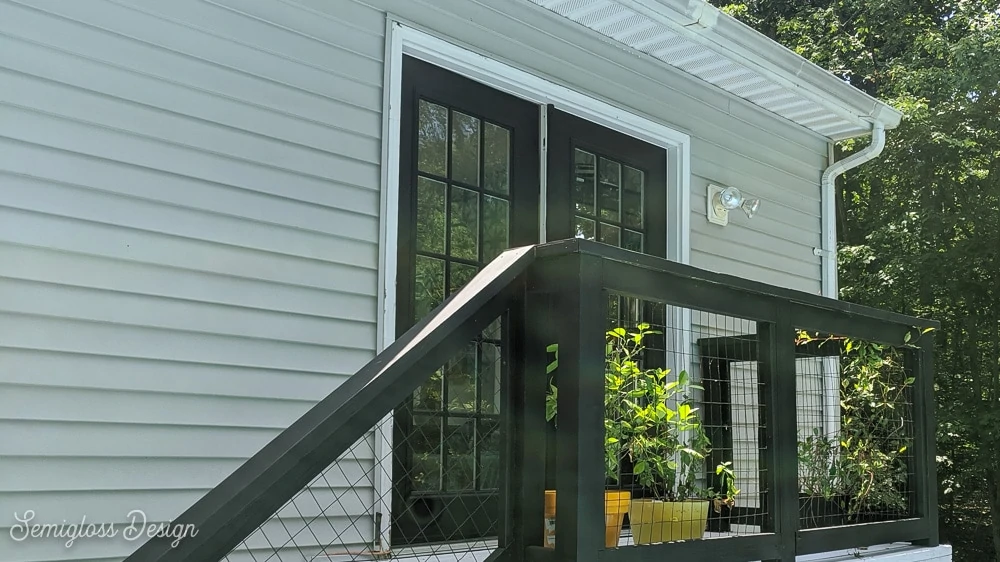
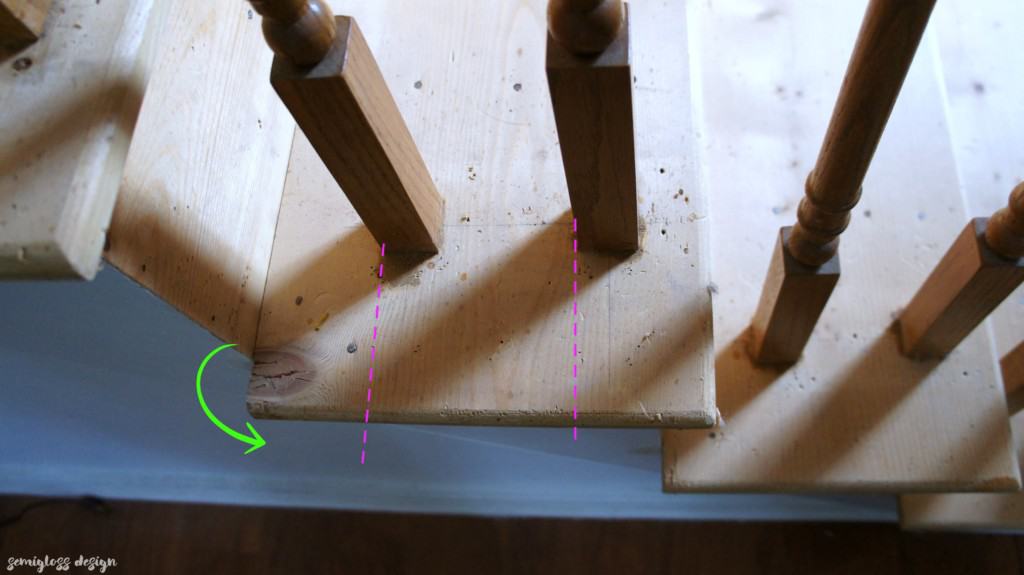



How do you transition the green and white trim color, specifically where the door comes to a close at the jamb side that is not the pocket?
I left that part white. It still needs to be touched up with fresh white paint along with all of the trim in the hallway. If you’re going to paint your trim the same color outside of the room as well, you can paint it all. If not, you can use tape to get a crisp line.